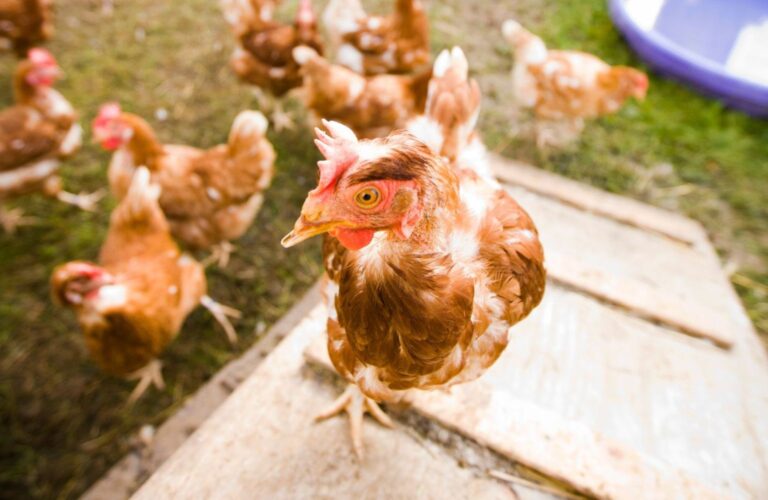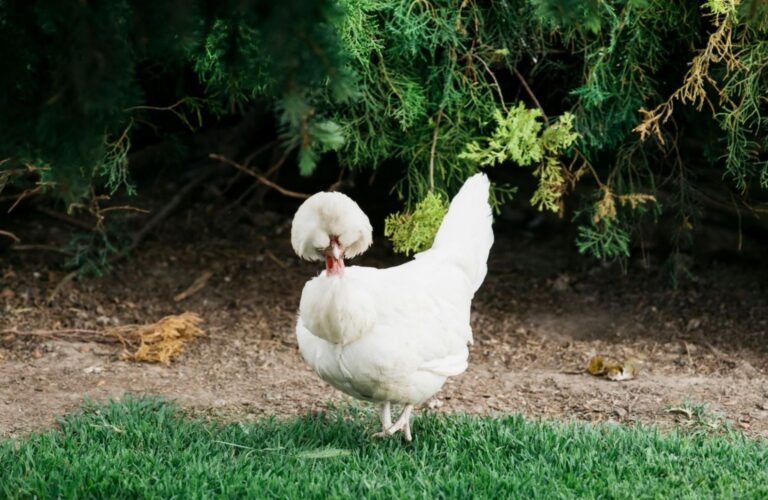How Are Chicken Egg Colors Formed?
All eggshells start white inside the hen because shells are primarily calcium. If your hens lay colored eggs, look at the inside of the shells to see the importance of calcium:
- White eggs will be white all the way through.
- Brown eggshells will be white on the inside.
- Blue eggshells are blue all the way through.
- Green eggshells will be blue on the inside and green on the outside.
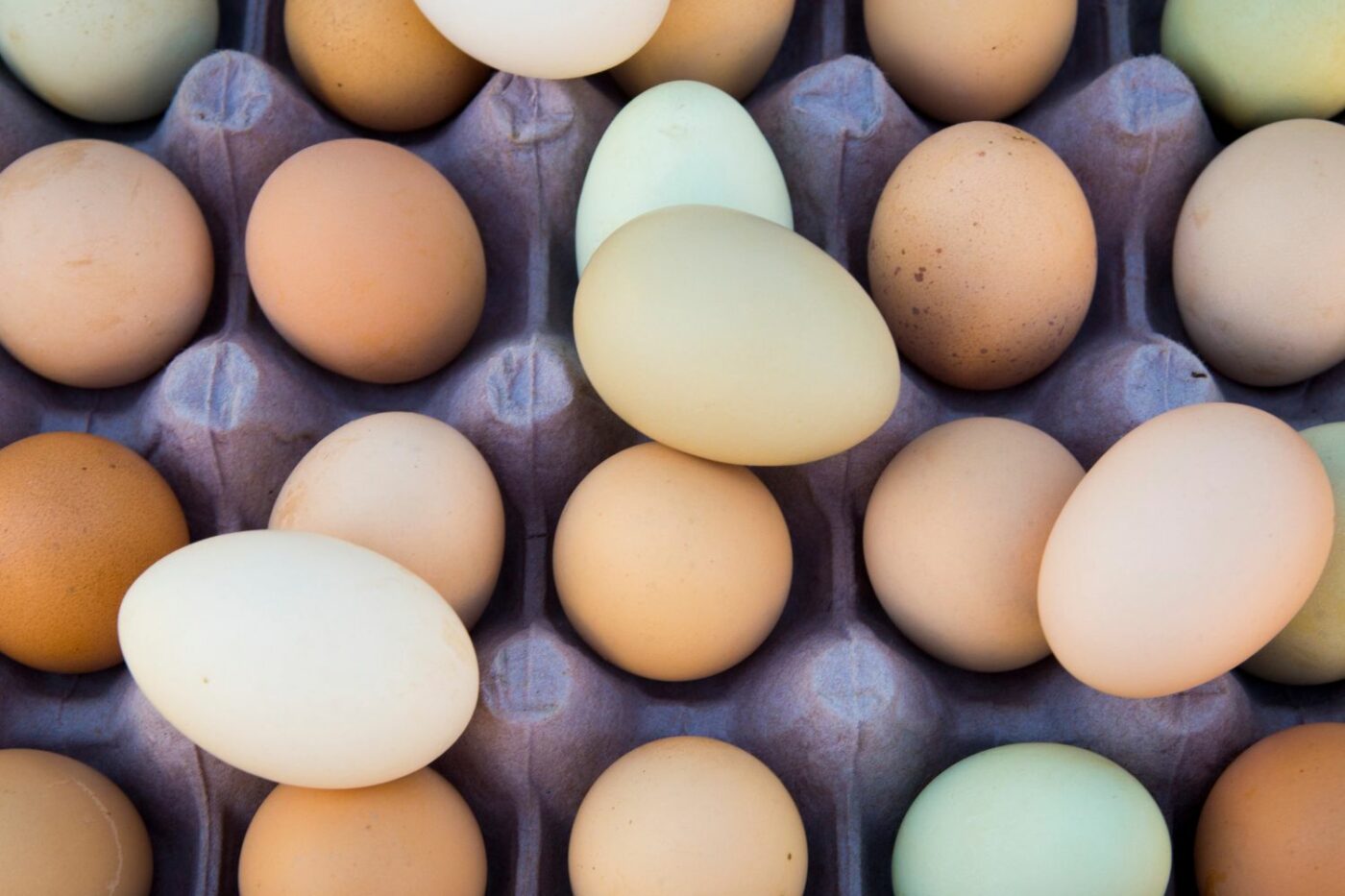
White Eggs
We all know about white-colored eggs as they are the most common of all chicken egg colors.
You might not know that white eggs are known as the wild type or o – this means the egg coloring is natural and non-mutated.
Jungle fowl (Ancestors of every chicken breed) lay white eggs which is why white eggs are known as the wild type.
The white color is both inside and outside of the shell.
Interestingly, many breeds that lay white eggs are of Mediterranean origin
- Leghorns
- Anconas
- Andalusians
- Buttercups
- Catalana
There are non-Mediterranean breeds that also lay white eggs
- Appenzeller Spitzhauben
- Breda
- Crèvecoeur
- Cubalaya.
Tinted or (off-white) egg-laying chickens include
- Dorkings
- Fayoumi
- La Fleche
- Faverolles
- Lakenvelders
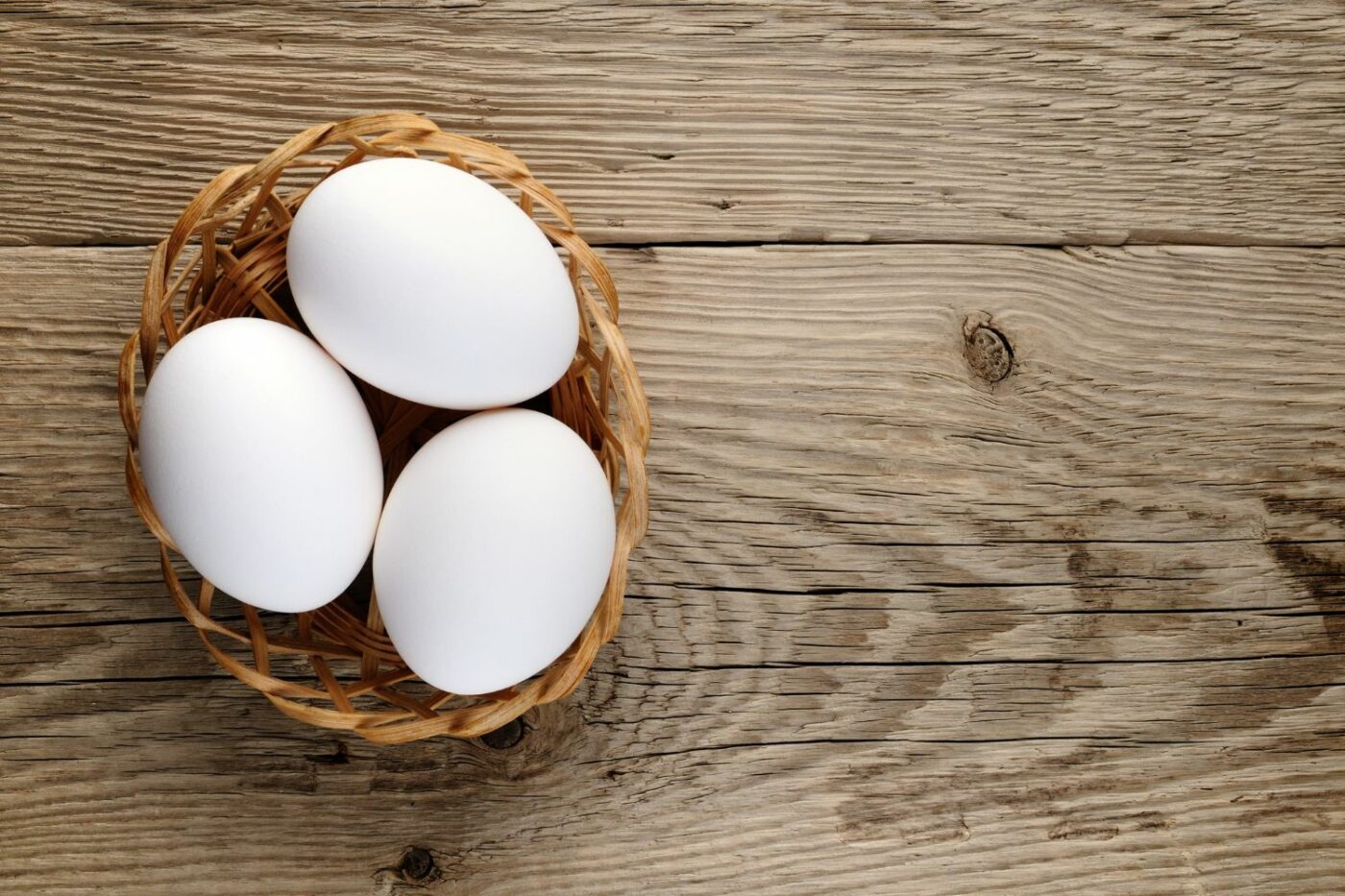
Brown Eggs
The second most common of the chicken egg colors is the humble brown egg. The brown coloration is synthesized in the hen’s shell gland (uterus) – exactly how and where is still unknown.
Brown dye (known as protoporphyrin IX) is deposited in the shell layers of the egg over a nearly twenty-hour period in the shell gland.
Interestingly, the brown does not color the shell’s inside (it remains white).
You will notice the heaviest application of the color is in the outer layers of the shell. This is because the hen has a certain amount of dye available, and when it starts to run low, the coloration becomes paler (much like your photocopier running out of ink).
The darkest-colored eggs will be laid earlier in the season, and the color will gradually fade out later.
Hens that lay dark brown eggs include.
- Welsummer
- Barnevelder
- Black Copper Marans
Light Brown Eggs
- Rhode Island Reds
- Basque
- Orloffs
- Jersey Giants
- Orpingtons
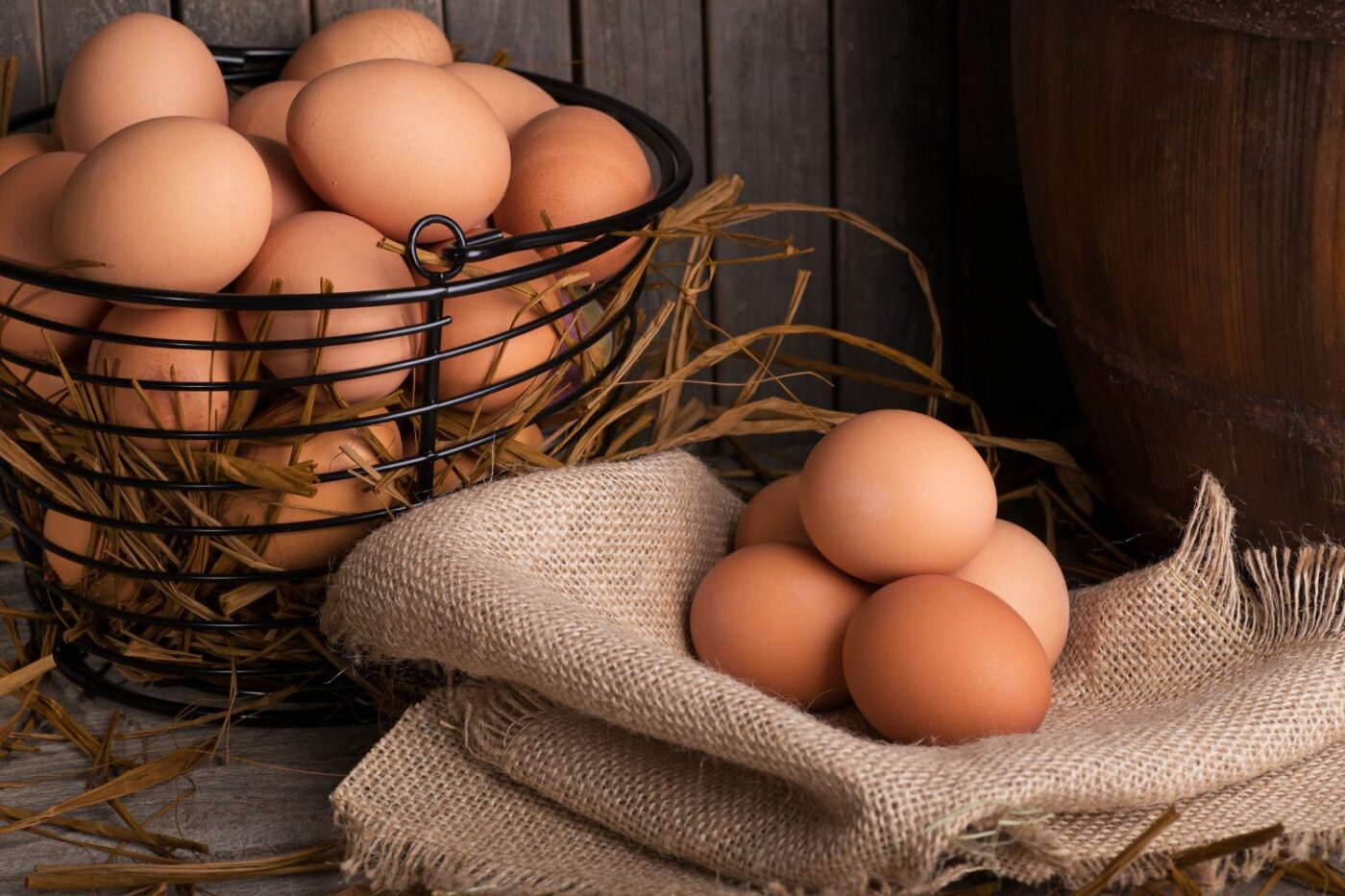
Blue Eggs
Perhaps the most vibrant of the chicken egg colors is the blue egg.
Chickens lay blue eggs with a dominant blue gene for their shell color.
This was caused by a retrovirus that altered the DNA sequencing in the hen.
The blue color is created by a substance called Oocyanin created in the hen’s liver. This blue coloration extends from the inside of the egg to the outside, making it blue throughout.
Hens that lay blue eggs include:
- Araucana
- Dongxiang
- Lushi
- Cream Legbar
- Ameraucana
- Easter Egger
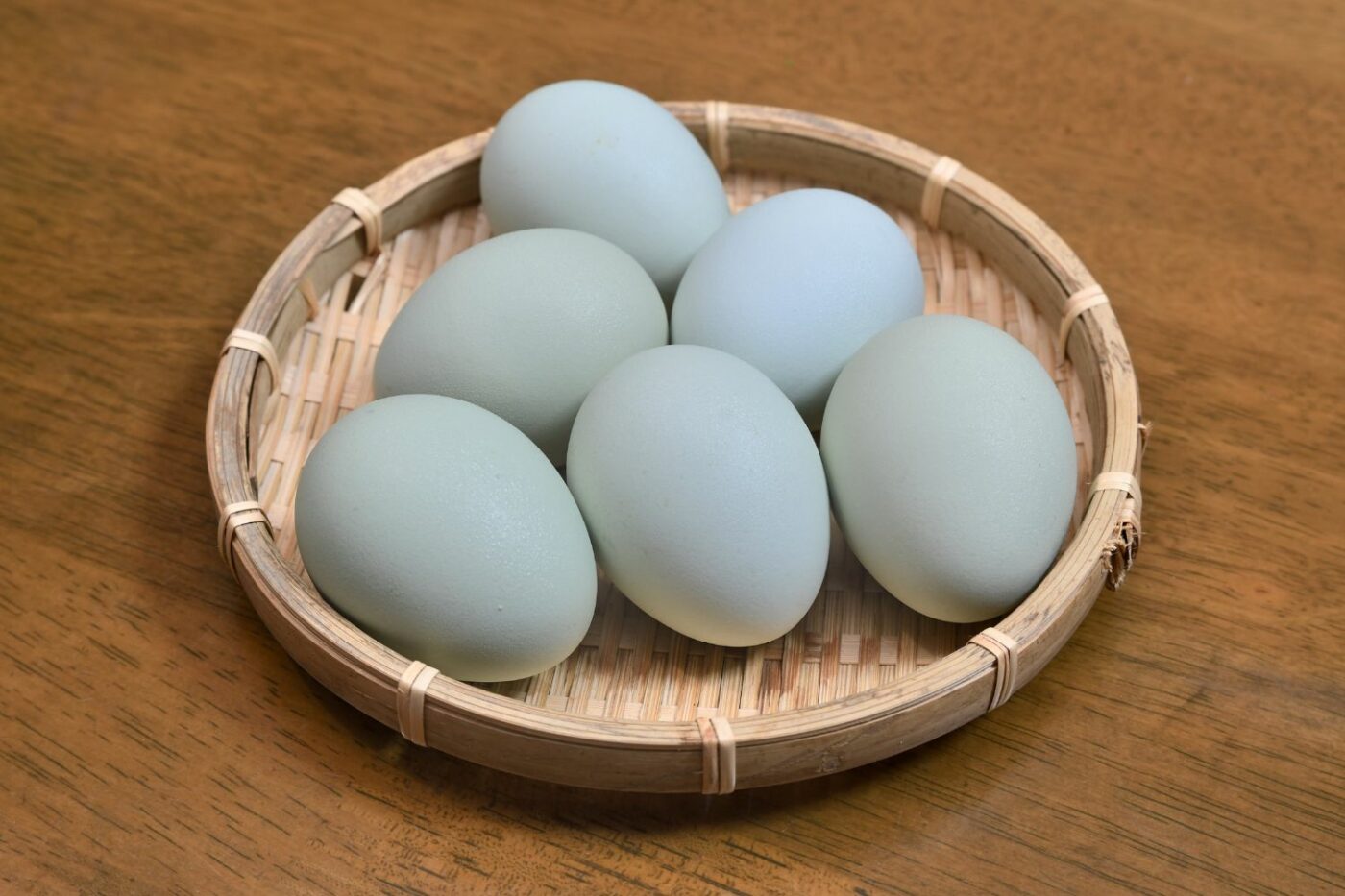
Chickens that Lay Colored Eggs
Fun fact: You can tell the shell color by the hen’s earlobe. Hens with white earlobes typically lay white or lightly tinted eggs. Hens with red earlobes most commonly lay brown eggs, but there are always exceptions to those rules. Different shades of chicken egg colors can come from the same bird on different days. This is because the bloom that is put on right before the egg is laid contains a fair amount of pigment.
Eggshell color is unique to each hen, depending on her breed and genetics. Eggshell color does not change egg nutrients; the color of the shell is simply decoration.
Popular breeds that lay colored eggs include
- Barred Rock
- Rhode Island Red
- Ameraucana
- Welsummer chickens.
Chicken egg colors will not change throughout its life, although, toward the beginning of a laying cycle, the hue may be darker than towards the end of the process.
Some chicken keepers discover even more unique egg colors, like deep pink, dark green, or speckled, by crossing different breeds. When a hen and rooster are mated, genes from both parents contribute to the eggshell color laid by their offspring.
Some of the most popular crosses are
- Easter Egger
- Olive Egger chickens.
Easter Eggers can lay various egg colors, from blue to green and sometimes even pink. Olive Eggers are aptly named for the olive-colored eggs they lay and result from crossing brown egg layers with blue egg layers. Other exotic chicken breeds like Easter Eggers could be a good choice for your backyard flock. Check out this blog for more exotic chicken breeds.
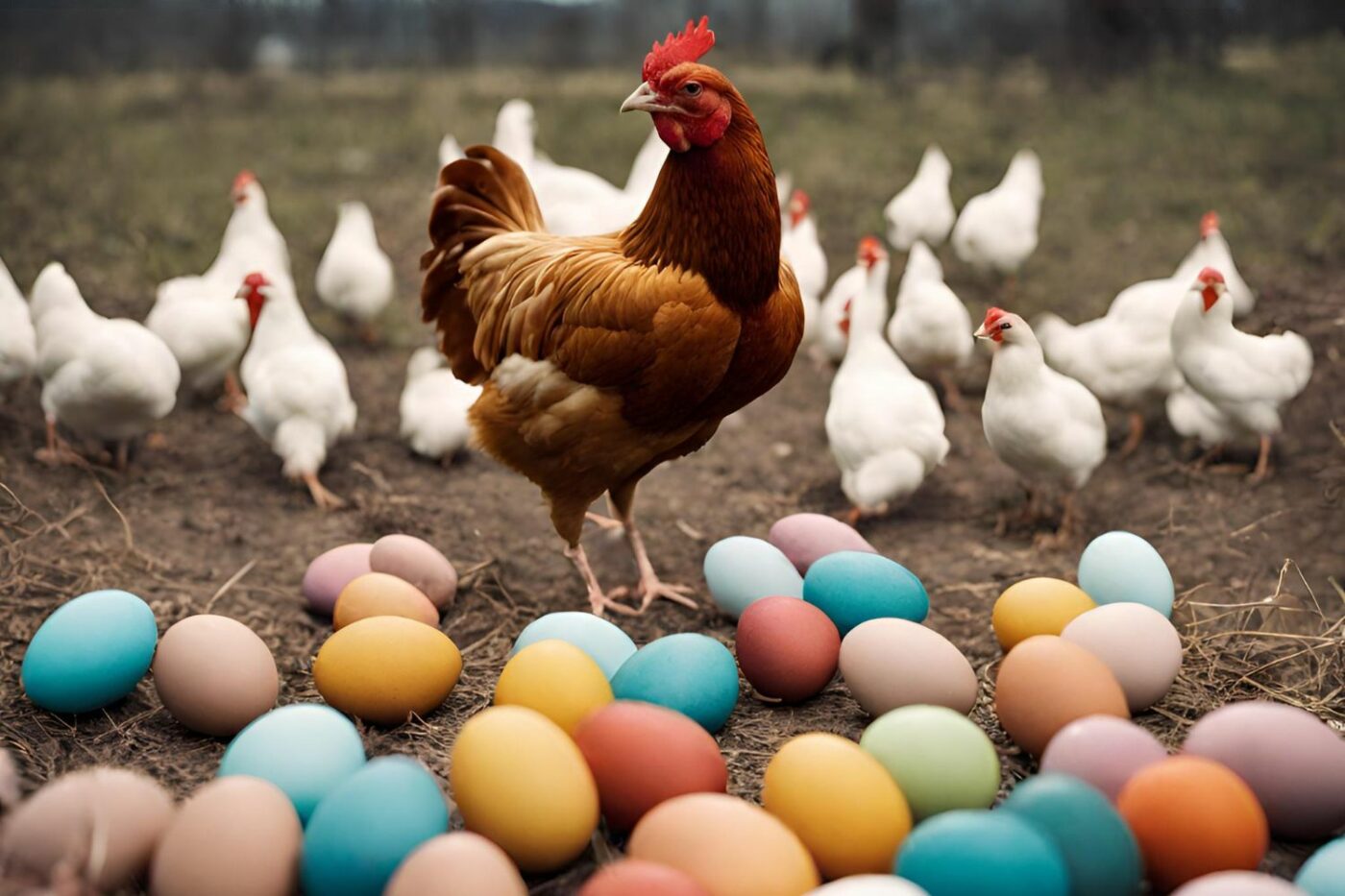
What is the Best Breed For Each Chicken Egg Color?
- White – Most Mediterranean breeds lay white eggs, but the White Leghorn is the most prolific. The white variety may be a bit flighty for small homesteads, but her sister bird (the Brown Leghorn) is easier to manage, calmer to deal with, and lays almost as many eggs.
- Blue – The Cream Legbar is the best layer of blue eggs. She is a cross between the Leghorn, Cambar, Barred Rock, and Araucana. She is also an auto-sexing bird, which means you can sex the chicks at birth.
- Chocolate Brown – Many people like the dark (chocolate) eggs of the Black Copper Maran. Although those deep-colored eggs are beautiful to look at, they do come at a price. Buying good quality stock is expensive.
- Brown – Depending on the shade of brown you want, you have a vast selection of breeds. The Rhode Island Red is perfect if you are looking for a mid-brown egg.
- Green – The Isbar is your best chance to get green-colored eggs. The depth of green coloration will depend on the quality and genetics of the bird. While some lay a deep moss green, others can lay anywhere from a light to a khaki-colored egg.
- Plum-Croad Langshans are the only breed known to lay plum-colored eggs on a relatively consistent basis (the quality of the color will depend upon the parentage).
- Pink – Pink eggs can be a matter of perception. To some folks, the egg may appear to be a light tint. To others, it will appear a pale pink. Orpingtons are your best bet for consistently pink-colored eggs.
Do Different Colored Eggs Taste Weird?
No, the chicken egg colors don’t affect the taste. All factors that determine chicken egg colors have nothing to do with egg flavor. The most significant factor for egg taste lies in the diet of the chicken that lays them. Chickens that are fed a healthy diet consisting of proteins such as grains and insects tend to produce better-tasting eggs. Freshness also makes a difference in how an egg tastes.
If you are thinking about starting your flock of chickens, we would love to help you get started and learn more about our products and how we can help you.


